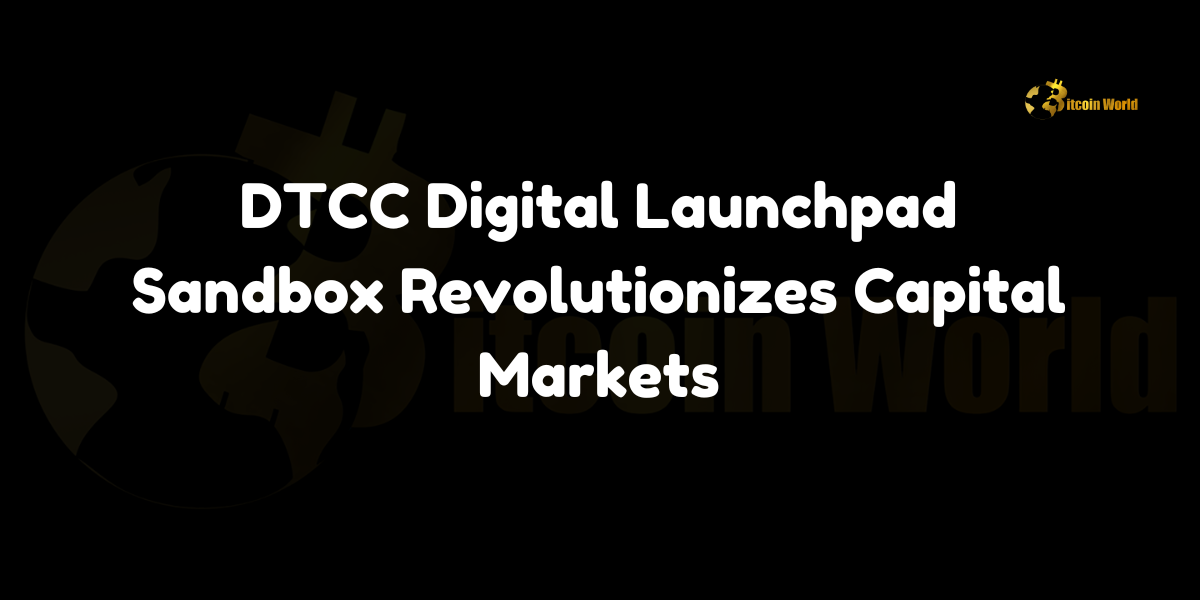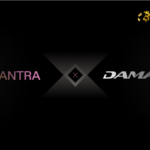[ad_1]
DTCC Digital Launchpad Sandbox is set to transform the landscape of capital markets by providing an open ecosystem for market participants and technology providers to innovate without significant upfront investments. Launched by the Depository Trust and Clearing Corporation (DTCC), this initiative aims to foster the development of production-ready, secure, and efficient digital market infrastructures and standards. By bringing together diverse industry stakeholders, the DTCC Digital Launchpad Sandbox seeks to revolutionize how capital markets operate in the digital age.
Introduction to DTCC and Its Role in Capital Markets
The Depository Trust and Clearing Corporation (DTCC) is a pivotal entity in the global financial system, providing clearing, settlement, and information services for various financial markets. Established in 1999, DTCC plays a crucial role in ensuring the smooth and secure transfer of securities and other financial instruments between buyers and sellers. By maintaining the infrastructure that underpins financial transactions, DTCC helps mitigate risks, enhance market transparency, and promote efficiency across the capital markets.
What is the DTCC Digital Launchpad Sandbox?
The DTCC Digital Launchpad Sandbox is an innovative initiative designed to create a collaborative environment where market participants and technology providers can develop and test new digital solutions. Unlike traditional development processes that require substantial investments in infrastructure and compliance, the sandbox offers a cost-effective platform for experimentation and problem-solving. This initiative aligns with DTCC’s commitment to advancing market technology and fostering innovation within the financial industry.
Key Features of the Digital Launchpad Sandbox
- Open Ecosystem: The sandbox is an inclusive platform that welcomes a wide range of participants, including financial institutions, fintech startups, technology providers, and regulatory bodies. This diversity fosters collaboration and the exchange of ideas, driving the creation of cutting-edge solutions.
- Problem-Solving Focus: The primary objective of the sandbox is to address existing challenges in the capital markets. By providing a space for participants to work on specific problems, DTCC aims to develop practical and scalable solutions that can be implemented in real-world scenarios.
- Cost-Effective Development: Traditional financial technology projects often require significant capital investments. The sandbox model reduces these barriers by offering shared resources and infrastructure, making it accessible to smaller firms and startups with limited budgets.
- Regulatory Collaboration: The sandbox facilitates close cooperation between industry participants and regulators. This collaboration ensures that new solutions comply with regulatory standards and can be smoothly integrated into the existing regulatory framework.
- Production-Ready Solutions: The ultimate goal of the sandbox is to develop solutions that are ready for deployment in live markets. This focus on production-readiness ensures that the innovations created within the sandbox can have a tangible impact on the capital markets.
Benefits of the DTCC Digital Launchpad Sandbox
1. Accelerated Innovation
By providing a dedicated environment for experimentation, the sandbox accelerates the pace of innovation in the capital markets. Participants can rapidly prototype and test new ideas, leading to faster development cycles and quicker implementation of effective solutions.
2. Enhanced Collaboration
The sandbox fosters collaboration among diverse stakeholders, including financial institutions, technology firms, and regulatory bodies. This collaborative approach ensures that solutions are well-rounded, addressing the needs and concerns of all parties involved.
3. Risk Mitigation
Developing and testing new technologies within the sandbox allows participants to identify and address potential risks in a controlled setting. This proactive risk management reduces the likelihood of issues arising during live deployment, enhancing overall market stability.
4. Cost Efficiency
By sharing resources and infrastructure, the sandbox model significantly reduces the costs associated with developing new financial technologies. This cost efficiency makes innovation more accessible, particularly for smaller firms and startups.
5. Regulatory Compliance
The close collaboration with regulators ensures that new solutions adhere to existing regulations. This compliance is crucial for gaining regulatory approval and facilitating the seamless integration of innovations into the market.
6. Market Competitiveness
The sandbox empowers participants to develop unique and competitive solutions, enhancing their position in the market. This increased competitiveness drives overall market growth and improves the quality of services offered to investors and other market participants.
How the DTCC Digital Launchpad Sandbox Works
Onboarding Process
Participants interested in joining the sandbox must undergo an onboarding process, which includes submitting proposals outlining the specific problems they aim to address and the solutions they intend to develop. DTCC evaluates these proposals based on their potential impact, feasibility, and alignment with the sandbox’s objectives.
Resource Allocation
Once approved, participants gain access to the sandbox’s resources, including secure development environments, data sets, and technical support. DTCC provides the necessary infrastructure to facilitate the development and testing of new solutions.
Development and Testing
Participants work on their projects within the sandbox, leveraging the provided resources to build and refine their solutions. The sandbox environment allows for iterative testing and optimization, ensuring that the solutions are robust and effective.
Regulatory Oversight
Throughout the development process, participants engage with regulatory experts to ensure that their solutions comply with relevant laws and standards. This oversight is crucial for addressing any compliance issues early in the development cycle.
Evaluation and Deployment
Upon completion, solutions are evaluated for their readiness and effectiveness. Successful projects can move towards deployment in live markets, with DTCC facilitating their integration into the existing market infrastructure.
Case Studies: Success Stories from the Sandbox
Streamlining Cross-Border Payments
One of the notable success stories from the DTCC Digital Launchpad Sandbox involves a fintech startup that developed a blockchain-based solution for streamlining cross-border payments. By leveraging blockchain technology, the solution reduced transaction times from days to minutes and significantly lowered fees. This innovation has the potential to transform international trade by making payments more efficient and cost-effective.
Enhancing Settlement Processes
Another success story is the development of an automated settlement system for securities transactions. This system utilizes smart contracts to automate the settlement process, reducing the risk of errors and delays. The automated system enhances market efficiency by ensuring that transactions are settled accurately and promptly.
Improving Regulatory Reporting
A financial institution partnered with a technology provider to create a solution for improving regulatory reporting. The solution automates the collection and analysis of transaction data, ensuring compliance with regulatory requirements. This innovation not only reduces the administrative burden on the institution but also enhances the accuracy and reliability of regulatory reports.
The Future of the DTCC Digital Launchpad Sandbox
Expanding Participant Base
DTCC plans to expand the participant base of the Digital Launchpad Sandbox, inviting more financial institutions, fintech startups, and technology providers to join. This expansion will increase the diversity of solutions developed within the sandbox, driving further innovation in the capital markets.
Introducing New Programs
In addition to the core sandbox program, DTCC is exploring the introduction of specialized programs focused on specific areas of the capital markets, such as digital asset management, cybersecurity, and sustainable finance. These programs will target emerging trends and address specific challenges within the financial industry.
Enhancing Technological Capabilities
DTCC is committed to continuously enhancing the technological capabilities of the sandbox. This includes upgrading the infrastructure, incorporating advanced tools and technologies, and providing additional resources to support participants in their development efforts.
Strengthening Regulatory Collaboration
DTCC aims to strengthen its collaboration with regulatory bodies, ensuring that the sandbox remains aligned with evolving regulatory standards. This collaboration will facilitate the seamless integration of new solutions into the market and promote a secure and compliant financial ecosystem.
Promoting Global Standards
The sandbox initiative seeks to contribute to the development of global standards for digital market infrastructures. By bringing together international stakeholders, DTCC aims to promote harmonized standards that enhance interoperability and efficiency across global capital markets.
Challenges and Considerations
Ensuring Security
As the sandbox involves the development of digital solutions, ensuring the security of these innovations is paramount. DTCC must implement robust security measures to protect sensitive data and prevent unauthorized access to the sandbox environment.
Balancing Innovation and Regulation
Balancing the need for innovation with regulatory compliance is a critical challenge. While the sandbox encourages creative solutions, it must also ensure that these innovations adhere to regulatory standards and do not introduce new risks to the financial system.
Scalability of Solutions
Developed solutions must be scalable to handle the volume and complexity of real-world financial transactions. Ensuring that innovations can be effectively scaled is essential for their successful deployment in live markets.
Fostering Continuous Collaboration
Maintaining ongoing collaboration between participants and regulators is essential for the sandbox’s success. Continuous dialogue and feedback are necessary to address emerging challenges and adapt to changing market conditions.
Strategic Implications for the Financial Industry
Driving Technological Adoption
The DTCC Digital Launchpad Sandbox plays a pivotal role in driving the adoption of advanced technologies within the financial industry. By facilitating the development and testing of innovative solutions, the sandbox accelerates the integration of technologies such as blockchain, artificial intelligence, and machine learning into capital market operations.
Promoting Financial Inclusion
Innovations developed within the sandbox can promote financial inclusion by providing more accessible and efficient financial services. Solutions that reduce transaction costs, enhance transparency, and improve access to financial markets can benefit a broader range of participants, including underserved populations.
Enhancing Market Resilience
By developing robust and secure digital market infrastructures, the sandbox contributes to enhancing the resilience of capital markets. Innovations that improve risk management, streamline operations, and increase transparency can help mitigate systemic risks and promote market stability.
Fostering Competitive Advantage
Financial institutions and technology providers that actively participate in the sandbox can gain a competitive advantage by being at the forefront of technological advancements. Early adoption of innovative solutions can differentiate these entities in the market, attracting more clients and investors.
Conclusion
The DTCC Digital Launchpad Sandbox represents a transformative initiative aimed at revolutionizing capital markets through innovation and collaboration. By providing an open and cost-effective environment for market participants and technology providers to develop and test new solutions, DTCC is fostering the creation of production-ready, secure, and efficient digital market infrastructures and standards
. This sandbox not only accelerates the pace of innovation but also ensures that new technologies are developed with regulatory compliance and market integrity in mind.
The benefits of the DTCC Digital Launchpad Sandbox are manifold, including accelerated innovation, enhanced collaboration, risk mitigation, cost efficiency, regulatory compliance, and increased market competitiveness. By addressing these key areas, the sandbox empowers participants to develop solutions that can significantly improve the functionality and efficiency of capital markets.
Despite its numerous advantages, the sandbox faces challenges such as ensuring security, balancing innovation with regulation, scalability of solutions, and fostering continuous collaboration. Addressing these challenges is essential for the sustained success and impact of the sandbox on the financial industry.
Looking ahead, the DTCC Digital Launchpad Sandbox is poised to expand its participant base, introduce new specialized programs, enhance technological capabilities, strengthen regulatory collaboration, and promote global standards. These strategic moves will further solidify the sandbox’s role in driving technological adoption, promoting financial inclusion, enhancing market resilience, and fostering competitive advantage within the financial industry.
As the financial landscape continues to evolve, initiatives like the DTCC Digital Launchpad Sandbox will play a crucial role in shaping the future of capital markets. By enabling the development of innovative and secure digital solutions, DTCC is paving the way for a more efficient, inclusive, and resilient financial ecosystem.
To learn more about the innovative startups shaping the future of the crypto industry, explore our latest news article, where we delve into the most promising ventures and their potential to disrupt traditional industries.
Disclaimer: The information provided is not trading advice, Bitcoinworld.co.in holds no liability for any investments made based on the information provided on this page. We strongly recommend independent research and/or consultation with a qualified professional before making any investment decisions.
[ad_2]
Source link





